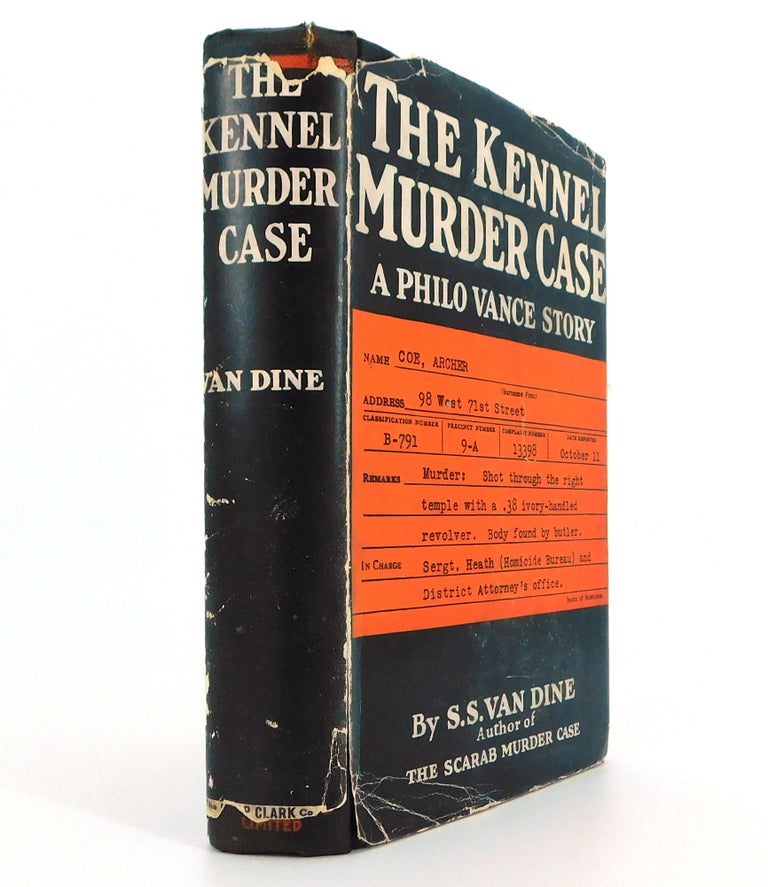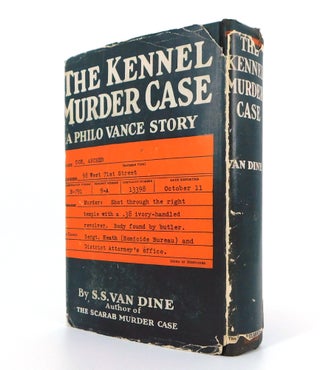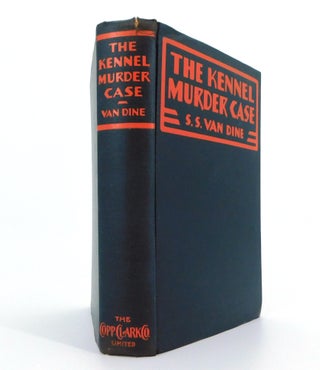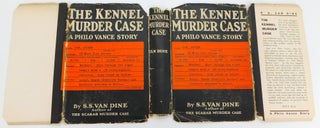The Kennel Murder Case; A Philo Vance Story
Toronto: Coop Clark, 1933. First Canadian Edition. Small 8vo., 7 1/4 x 4 7/8 (185 x 124 mm); pp. 307. Original black cloth, titles on spine and front board in dark orange ink, bumped at head of spine. Original dust jacket with orange homicide case card (American Edition was dark pink), chipped especially on spine and corners and some small tears on edges, inside in fine condition. A rare and attractive book.
The Kennel Murder Case is the novel 6th featuring Van Dine's Philo Vance character. It was adapted to a film version in 1933, directed by Michael Curtiz for Warner Bros., starring William Powell and Mary Astor and is considered one of the greatest screen adaptations of a Golden Age mystery novel. Warner Bros. remade it in 1940 as "Calling Philo Vance" with James Stephenson as Vance and William Clemens directing.
S. S. Van Dine is the pseudonym used by American art critic Willard Huntington Wright (October 15, 1888 – April 11, 1939) when he wrote detective novels. Wright was an important figure in avant-garde cultural circles in pre-World War I New York, and under the pseudonym (which he originally used to conceal his identity) he created the fictional detective Philo Vance, a fictional amateur detective who was featured in 12 novels in the 1920s and 30s. During that time, Vance was immensely popular in books, films and radio. He was portrayed as a stylish, even foppish dandy, a New York bon vivant possessing a highly intellectual bent. Van Dine was also a fictional character in the books, a sort of Dr. Watson figure who accompanied Vance and chronicled his exploits.
As Van Dine described the character of Vance in the first of the novels, The Benson Murder Case: «Vance was what many would call a dilettante, but the designation does him an injustice. He was a man of unusual culture and brilliance. An aristocrat by birth and instinct, he held himself severely aloof from the common world of men. In his manner there was an indefinable contempt for inferiority of all kinds. The great majority of those with whom he came in contact regarded him as a snob... He detested stupidity even more, I believe, than he did vulgarity or bad taste.».
Condition: Very Good.
Item number: 334
Price: $150.00
Share:



